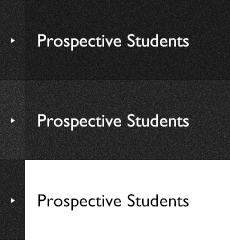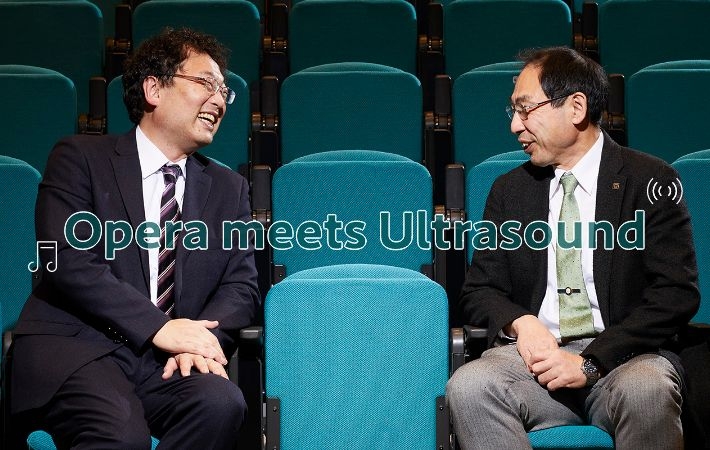
Sound is everywhere in our daily lives. Its types range from musical performances and singing voices to the sounds of nature, noise, and ultrasound. Here is a talk on sound between Jun Takahashi, a singer (tenor) who has performed in numerous operas, and Professor Kentaro Nakamura, who conducts cutting-edge research on ultrasound. Insights from different fields will help to unravel the potential of "sound."
What is the relationship between audible music and inaudible ultrasound?
Takahashi:I am a singer, and I am very much looking forward to hearing about sound from a scientific point of view. Please tell us what ultrasound is.
Nakamura:First of all, a sound is a vibration of air, and its number of vibrations (frequency) corresponds to the pitch of the sound that a person senses. Humans can hear frequencies from 20 to 20,000 Hz. Sounds with higher frequencies are called ultrasound. Ultrasound has a wide range of applications such as automobile sensors and medical diagnostic equipment, as well as applications for cleaning, cutting, and bonding in the industrial sector. The eyeglass cleaner at the optician is an example.
Takahashi:Even in my work as a singer, there are many situations where I am aware of the existence of sound waves. At the College of Music, I learned about the Doppler effect in acoustics course, and while learning the musical scale I learned about the system of harmonics*1. When making a CD, sounds that humans cannot perceive are omitted, but some say that live performances sound richer because they retain these sound waves.
*1 What are "harmonics"?
A sound that is a whole-number multiple of the frequency that is generated in addition to the fundamental frequency when a sound is emitted. The way harmonics are generated determines the effect of the sound.
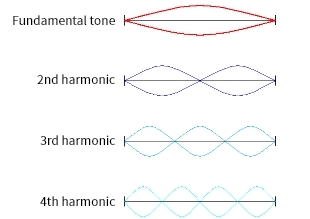
Nakamura:That's an interesting point of view. My research has made me realize that there is a discrepancy between measurement results and human senses. For example, even if the measured values indicate that the sound level has doubled, humans do not perceive the difference as double. Digital audio can take advantage of these properties in recording to reduce the data volume. It may be a musician's point of view that live performances that include all sounds are richer. As someone who has refined their senses, what kind of concert hall do you find is good to perform in?
Takahashi:The acoustic design of concert halls has a long history, and the concert hall made by Minoru Nagata (founder of Nagata Acoustics) is especially famous. He worked on Suntory Hall, which achieved the optimum reverberation time for concerts of 2.1 seconds, causing a stir. I can sing freely in this kind of carefully constructed concert hall without being conscious of the size of the space. A good concert hall is a place where the performer can perform anywhere on the stage without strain. The fine nuances reach the audience. It brings out the vibrance of the performance. To make the sounds resonate well, it is also important to use your body well. Not only your throat but also the whole of your body as a space where sounds resonate affects your performance expression significantly.
Nakamura:You use the concert hall as an extension of your body to make the sounds resonate. Even ultrasound research stresses "how to make sounds resonate" when producing strong sound waves. Dimensions are a rough indication of that. Changing the size of objects and spaces that vibrate in response to sound waves modifies how sounds resonate.
Takahashi:Being able to grasp how sound resonates through numerical values is different from music. Performances that only have perfect sound intensity have an unsatisfying effect on the audience. Of course, accurate playing skills are necessary, but more important is having an interpretation that you want to express. This leads to rich music that resonates in people's hearts.
The power of "sound" refined by "measuring" and "listening"
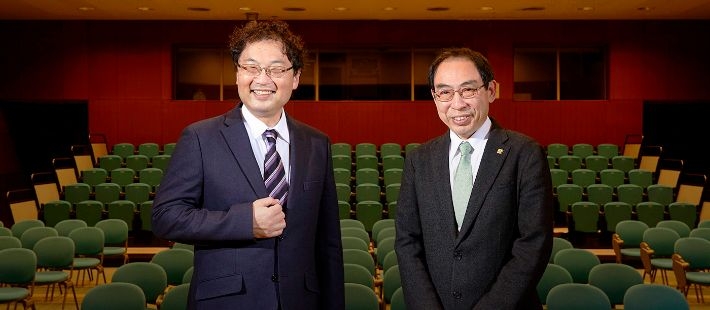
Takahashi:Sound is a blessing to the world in various ways, but in music I think it makes a great contribution to spiritual richness. Good music not only heals, but also conveys the emotions and breathing of the performer, as well as the underlying psychology. In Europe, where music is a part of life, concerts have been held even in wartime. I think this fact can be gleaned from European culture, which values people's peace of mind. On the other hand, your sounds have been polished with an eye toward practical, real-world use.
Nakamura:Yes, that's right. Ultrasound technology is used for joining plastic containers containing prepared foods (found in supermarkets), cutting cakes at pastry factories, and for cataract and prostate cancer surgeries. Ultrasound plays an important role in every aspect of our lives. In addition, precise measurements are required to fully demonstrate its effect. Ultrasonic waves have a high frequency and a short wavelength, so they cannot be measured correctly with a normal microphone. Therefore, we have developed a new microphone that is as thin as hair, and we are working on measurements.
Takahashi:I also recognize the importance of verification to obtain good results. Music is about listening, not measuring, but training is indispensable for improving this skill. As an example, there is a basic training method called "solfège", where you gradually acquire a sharp sense through the experience of reading a score and playing its sound in practice, listening to a sound and transcribing it on a score.
Nakamura:People are involved in the entire process of playing, listening to, and evaluating music, so it is difficult to make a uniform judgment. I have also heard that when there's a problem with noise, it is effective to promote communication between the parties concerned in addition to physical countermeasures.
Takahashi:Certainly, if your impression of the person making the sounds changes, dissatisfaction and anger may fade away. Both the music we create and the many industrial products that have incorporated your research will eventually reach people. In every field, I think it's indispensable to have a perspective on how to be there for people and help them.
"Touching the real thing" leads to learning in both ultrasound and music
Nakamura:In terms of reaching*2 people, you have other interactions with students as a lecturer at the Tokyo College of Music, in addition to your role as a singer. Is there anything that you are particularly careful about when teaching?
Takahashi:When I teach, I am conscious of not only demonstrating but also communicating in words. Even if a teacher sings something in practice, it is not always possible for students of different sexes and physiques to reproduce it according to the model. I think a concrete image through words is necessary in order for people to understand sensory things. Also, since opera has a style inherited from predecessors, students need to experience various performances. Learn the history of music, put it into practice yourself, and output it as a new expression. I think that the independence and spirit that are nurtured in the process will be the basis for playing an active role in society.
Nakamura:As an educator, I really sympathize with what you are saying. What I have repeatedly told the students in my laboratory is that I want them to observe physical phenomena in practice and deepen their understanding through their own senses. Even if you read textbooks and academic papers, it is meaningless unless you can connect that knowledge with the phenomena right in front of your eyes. I want them to develop a sense of what will be useful in future manufacturing through various experiences*3.
*2 How sound reaches you
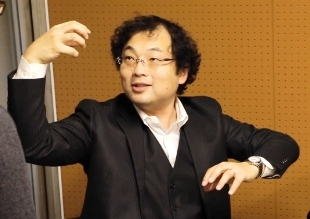
The idea of speaking is actually close to that of a ball game
If you try to forcibly say something loudly, it will put a strain on your throat, so the key point is to sing so that the sound resonates with your own body. It is also called the "bel canto singing method" and is often conveyed by expressions such as letting sounds fly or throwing sounds.
*3 Learn through real experience
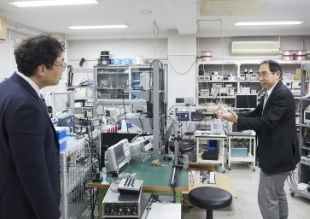
Real experience linked to knowledge is key at Nakamura Lab
The laboratory is lined with equipment that allows students to conduct research through trial and error. It is full of ideas and ingenuity, such as an experimental device that uses sound waves to determine the presence of people in a room, and a technology that uses ultrasound to remove stains and raindrops on glass surfaces.
Exploiting the possibilities of humans and sound will lead to an unimaginable future
Takahashi:Teamwork is also important to bring out the results of these efforts. In the case of music, especially in choruses and orchestras, the ability to "listen" is essential to building teamwork. Better performances can be achieved by listening carefully to match pitch and pronunciation, and being attentive to eye contact. In fact, it is even said that conductors need the ability to capture hearts more than the ability to swing a baton.
Nakamura:Oh, I see. In engineering research, individual ideas and hard work are often the starting point, but the process of actually making something useful to the world is a team battle. Most of the time, once you're a member of society, you'll get things done as a member of an organization. When people with different values come together and work as one, something valuable will be created that lifts people's hearts and lives.
Takahashi:That's right, and we believe that the mission of a singer is to pursue the value transferred from one living person to another. Recently, speech synthesis technology and online distribution have spread rapidly, but there is still room for growth in human-mediated analog expression. If you can fully exploit its appeal, the expression will be wonderful.
Nakamura:I'm looking forward to that. The amount of information that "sound" has, including the music that you are involved in, is extremely rich. Visual media often gets the spotlight, but I think that sound contains a wealth of information that is just as impressive. For example, the number of pixels in displays is increasing, but the basic components are the three primary colors of red, green, and blue only. As for sound, the number of speakers is not as large as the number of pixels, but the frequency and dynamic range of the sounds are orders of magnitude greater than those of the visual sense. Also, visual information can be blocked by closing your eyes, but sound can be heard to some extent even if your ears are closed. I think that sound has infinite possibilities, including its inconveniences.
Takahashi:Sounds with unique characteristics and the emotions of humans that perform them. It's my eternal desire to link the two. The seeds of research are endless for both of us.
Still a long way to go Deepening intellectual curiosity
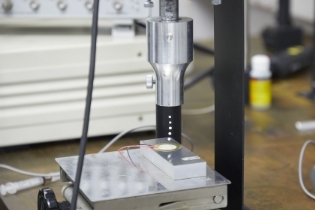
Ultrasound
Various attempts have been made utilizing the energy of ultrasound. There is a technology (photo) that floats a liquid or a small object in a sound wave node, and it is also possible to make the surface of metal slimy like mud with minute vibrations of ultrasonic waves. Be attentive to various inaudible, invisible phenomena caused by "ultrasound".
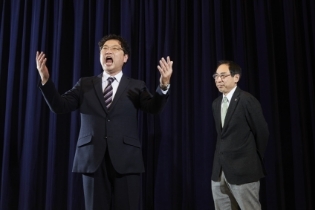
Vocal music
To make your voice resonate, it is important to resonate your entire body. Especially in opera's classical vocalization, the burden on the throat is reduced by conceiving of the head and chest as a room or hall (head voice, chest voice) and being aware of the space inside each human body structure. In addition, understanding the voice as a line rather than a surface and having the awareness of reaching each member of the audience will lead to improved expressive ability.
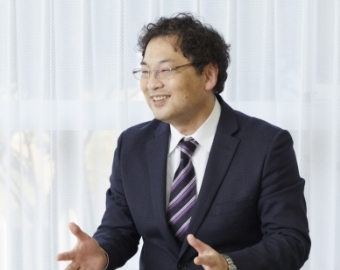
"Various sound waves unique to live music. Their existence mysteriously enriches the color of the music itself."
"Various sound waves unique to live music. Their existence mysteriously enriches the color of the music itself."
Jun Takahashi
singer (tenor)
Born in Saitama prefecture. Graduated from the Tokyo College of Music and completed a master's degree at its graduate school. Recognized for his incredibly beautiful voice and power of expression, he has performed at the world premiere and Japan premiere of numerous opera works. Currently, he is also active as a lecturer at the Tokyo College of Music. Member of (singer group) Nikikai.
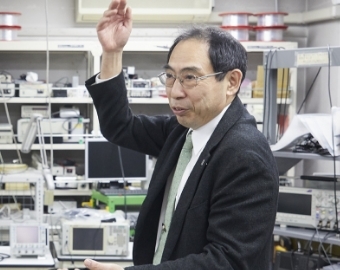
"There is a difference between mechanical measurement and human senses. That difference is the challenge and thrill of studying sound waves."
"There is a difference between mechanical measurement and human senses. That difference is the challenge and thrill of studying sound waves."
Kentaro Nakamura
Laboratory for Future Interdisciplinary Research of Science and Technology, Institute of Innovative Research, Professor
Born in Tokyo. Received his undergraduate and graduate degrees from Tokyo Tech. Doctor of Engineering. He conducts research on applications of ultrasound and acoustic measurement using optical fibers, as well as activities aimed at real-world implementation of technologies for people with hearing impairments. He is also the director of the student baseball club.
The Special Topics component of the Tokyo Tech Website shines a spotlight on recent developments in research and education, achievements of its community members, and special events and news from the Institute.
Past features can be viewed in the Special Topics Gallery.
(Interview held on December 10, 2021 on Suzukakedai Campus)
. Any information published on this site will be valid in relation to Science Tokyo.












